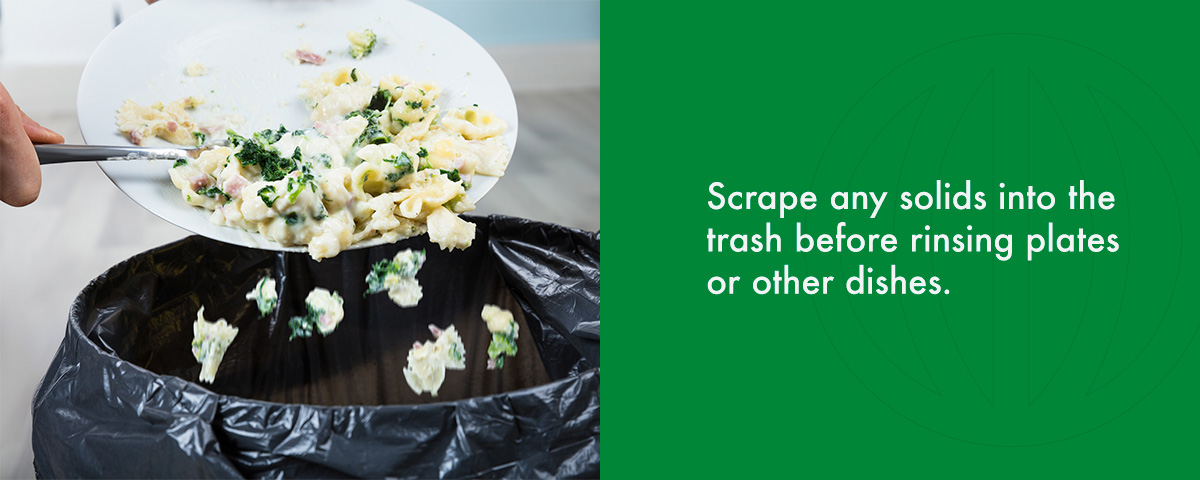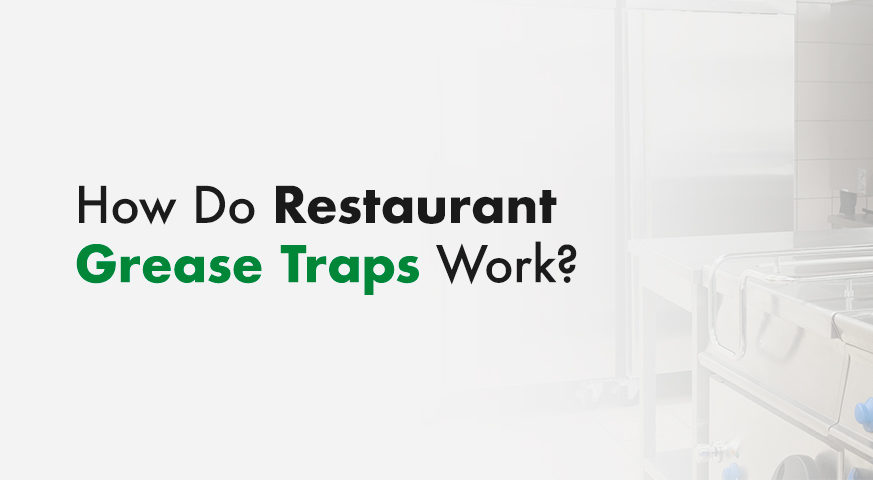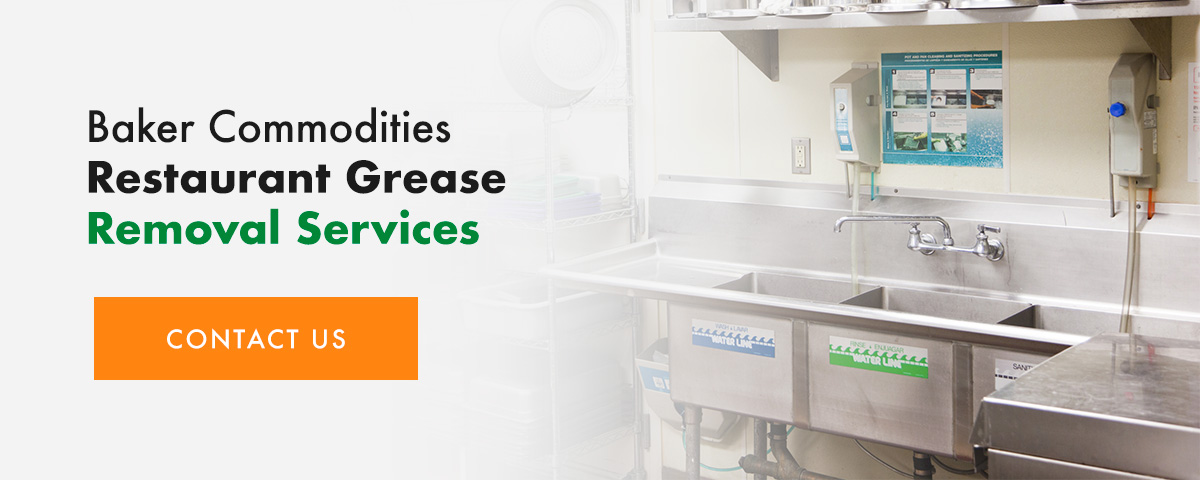How Do Restaurant Grease Traps Work?
Table of Contents:
- What Is a Restaurant Grease Trap?
- How Does a Grease Trap Work?
- Understanding the Parts of a Grease Interceptor
- How to Avoid Grease Trap Clogs
- How Often Should You Clean Your Grease Trap?
- Maintaining Your Grease Trap With Total Grease Management®
Most local governments have regulations in place requiring restaurants to use grease traps to keep fats, oils and greases (FOG) out of the sewer system. A grease trap prevents FOG and other solids from clogging and eroding pipes and drains. It’s important to clean and maintain your grease trap properly to avoid clogs, overflows, backups and damage.
A regular grease trap cleaning schedule can prevent grease from building up, helping ensure your trap continues to operate effectively. We created this guide to help you understand how grease traps work and what you can do to keep yours running smoothly.
What Is a Restaurant Grease Trap?
A restaurant grease trap is a container that catches FOG, sugar and other solids before they can enter the sewer system. Soiled water drains through pipes from restaurant dishwashers, floor drains and sinks and flows into the grease trap. The trap collects solid wastes so the soiled water can travel to a wastewater treatment center without damaging any pipes along the way.
Grease traps prevent your kitchen’s waste materials from damaging local water lines, which can cause untreated wastewater to leak out and pollute the environment. Keeping your grease trap clean and well-maintained protects your community from public health hazards and helps you avoid potential fines.
How Does a Grease Trap Work?
A grease trap is usually underground in an accessible outdoor area. It allows fats, oils and greases to floats, while solids sink allowing the water to flow through and on to the city sewer system and the municipal water supply.
While grease traps filter residual FOG materials that enter wastewater through normal kitchen operations, it’s very important not to pour grease directly down the drain. Grease can solidify as it travels through pipes, leading to backups, clogs and overflows that damage your plumbing system and potentially your local city sewage system.
Avoid disposing of solid materials down your drain. Instead, make sure you properly collect and recycle any used cooking oil. In addition to keeping it out of the soil and water supply, recycling your cooking oil can help create animal feed, food-safe lubricants and even renewable biofuel.

Understanding the Parts of a Grease Interceptor
A grease trap contains the following five critical components:
- Flow rate controller: The flow rate controller slows the flow of the wastewater before it enters the grease trap.
- Inlet pipe: Wastewater flows through the inlet pipe to enter the grease trap.
- Baffles: Baffles are metal barriers that slow the wastewater’s flow so that FOG can separate from the water.
- Water: Added water cools the wastewater to solidify and separate grease from the wastewater.
- Outlet pipe: Wastewater exits the grease trap and enters the sewer system through the outlet pipe.
How to Avoid Grease Trap Clogs

Grease trap clogs can damage your system, cause overflows and potentially lead to fines if they affect the city’s water supply. You can avoid these clogs by properly maintaining your grease trap. Educate your employees to take the following precautions:
- Avoid pouring grease down the drain.
- Scrape any solids into the trash before rinsing plates or other dishes.
- Use sink drain covers to collect solid food waste and other debris.
You should examine your grease trap periodically to check for any damage or wear. If you notice any smells, you may need to replace the gasket that seals the lid to the trap. You should also schedule regular preventive maintenance — a service tech can identify any damage and clean your grease trap to prevent clogs, overflows and backups.
How Often Should You Clean Your Grease Trap?
You should properly clean your grease trap and schedule an inspection every one to three months. The exact frequency you should aim for will depend on the size of your grease trap and the volume of grease that your restaurant typically produces. Scheduling regular grease trap cleaning will help you prevent solid waste from building up and overflowing into your kitchen or the sewer system.
The plumbing industry standard is known as the one-fourths rule. This rule requires restaurants and other establishments to have their grease trap cleaned once it is 25% full of FOG materials. A quarter-full trap can lead to overflow and leaks, so it is vital to clean a grease trap before or as soon as FOG materials reach this level.
You can be held liable as a restaurant owner if your grease is disposed of improperly or illegally. It’s critical to schedule cleaning and restaurant grease disposal with a reputable company that complies with city ordinances.
Check if your city mandates a particular restaurant grease trap pumping method. The dry pump cleaning method fully removes both the FOG materials and the gray water, leaving your grease trap dry until new wastewater enters it. Dry pumping is the only safe and recommended grease trap cleaning method.
The pump and return cleaning method, which returns the separated gray water to your grease trap, is illegal in many locations. Be sure to hire a reputable grease trap cleaning service that will fully evacuate all water, solids and grease from your trap.
Grease Trap Preventative Maintenance
Maintaining Your Grease Trap With Total Grease Management®
Baker Commodities offers Total Grease Management® services, including grease trap and interceptor pumping and cleaning. Baker Commodities’ highly-skilled technicians will completely remove any water waste, solid materials and grease and recycle it at an environmentally-friendly facility. You can pick and choose the services you want to build your own customized program. When you trust Baker Commodities for your grease trap maintenance needs, you can expect the following services:
- Full removal of waste materials
- Direct compliance with your local municipality’s regulations
- Interior grease trap wall scraping and cleaning
- Video inspection to check for drain issues
- Preventive maintenance
- Equipment condition reports
- Grease trap inlet and outlet hydro-jetting
- Grease trap material recycling
- Service interval scheduling
- Complete reports of work performed and proof of service
Baker Commodities Restaurant Grease Removal Services
You can prevent clogs, overflows, backups, fines and potential public health hazards by properly maintaining your grease trap. Whether you need grease trap cleaning and grease disposal or need to recycle used cooking oil, Baker Commodities can help. We will follow your local municipality’s regulations, so you can rest assured that we will recycle and dispose of your kitchen waste safely and legally.
We also offer a variety of cooking oil removal options so you can safely recycle your kitchen’s grease and help the environment. Contact Baker Commodities or call us Toll Free at (855) 4-BAKER-0 to learn more about how we can help you maintain your grease trap and safely remove solid wastes to prevent damage and grease buildup in an environmentally-friendly manner.




